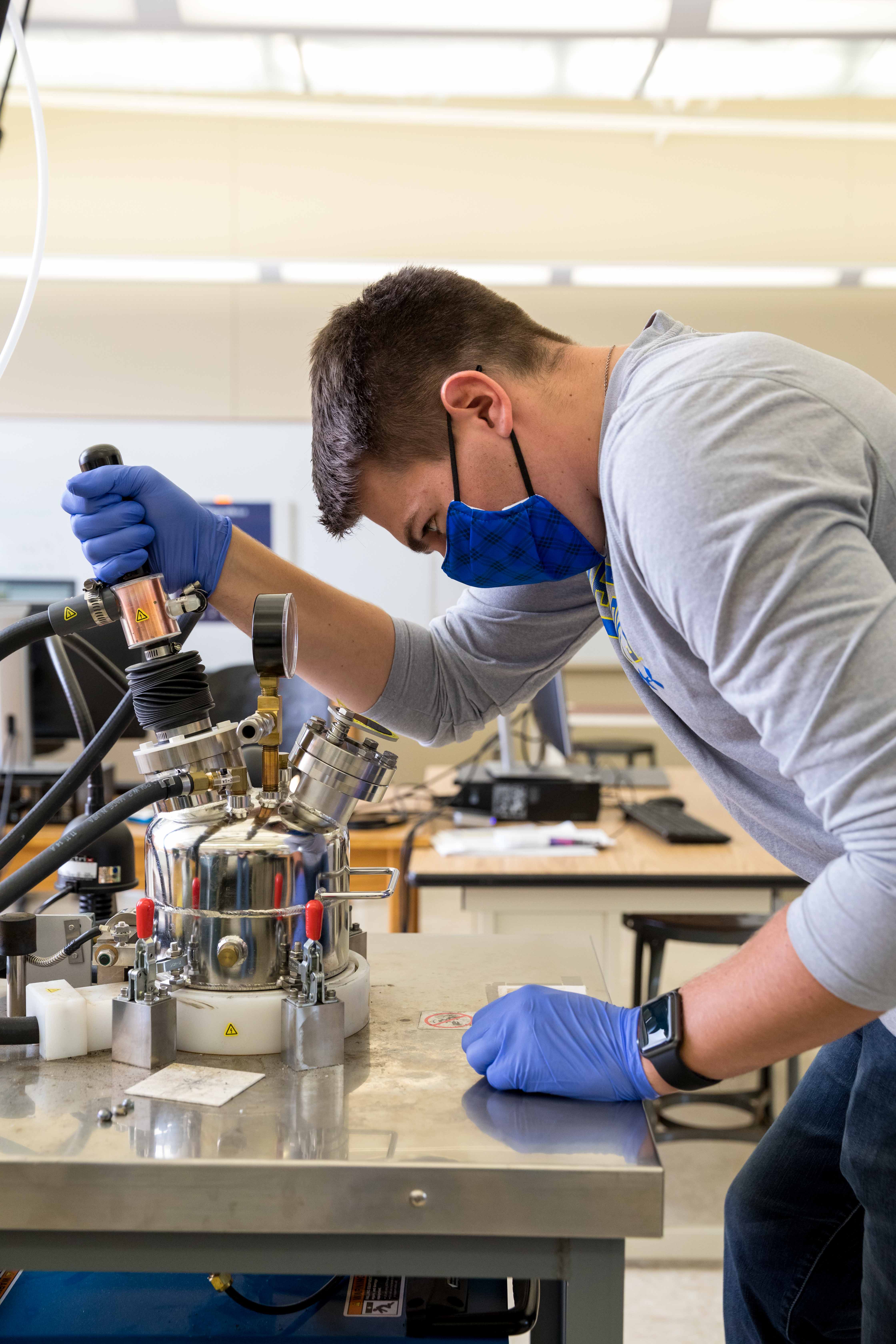The secret is in the spin.
New semiconductor materials that use an electron’s spin to store information can make computers and electronic devices faster, smaller, more energy efficient and less expensive, according to South Dakota State University associate professor of physics Parashu Kharel. He has been formulating new spintronic materials known as half-metallic Heusler compounds for more than five years.
This fall, Kharel received a three-year, nearly $160,000 National Science Foundation grant through the Division of Materials Research and the Established Program to Stimulate Competitive Research, known as EPSCoR, to develop and test Heusler compounds for spintronic applications. Two undergraduate students will also work on the project.
Spintronic materials use the direction of an electron’s spin, up or down, to store information, Kharel explained. “The goal of the NSF project is to develop a half-metal that behaves as an insulator/semiconductor for one spin direction and a conductor for the opposite spin direction at room temperature.” These attributes make the material 100% spin polarized.
“Using these materials for data manipulation and storage means greater energy efficiency because significantly less energy is needed for the write operation,” he said. “Data storage and retrieval is done electrically without any moving parts enabling the integration of magnetic memory components with semiconductor chips.”
For the project, Kharel will collaborate with University of Northern Iowa physics researchers, associate professor Pavel Lukahsev and professor Paul Shand, who received a separate NSF grant. Kharel has been working with the UNI group since 2014.
The NSF project is based on two discoveries that Kharel and the UNI group made about Heusler compounds. First, the researchers modified the elemental composition thereby transforming the compounds from a regular metal into a new material with 100% spin polarization, also known as a spin-gapless semiconducting material.
Furthermore, they found these materials retain their spin polarization when applied as a thin film. “This was an unexpected discovery because the thin-film geometry commonly destroys the half-metal’s beneficial properties,” Kharel said. This discovery may make components with multilayer designs possible.
“UNI does the theoretical work and we make the material,” Kharel said. Both teams then do experimental work to examine the material’s crystal structure, to evaluate its magnetic and electron transport properties and to measure the degree of spin polarization. “Working together helps us make discoveries faster,” Kharel concluded.
